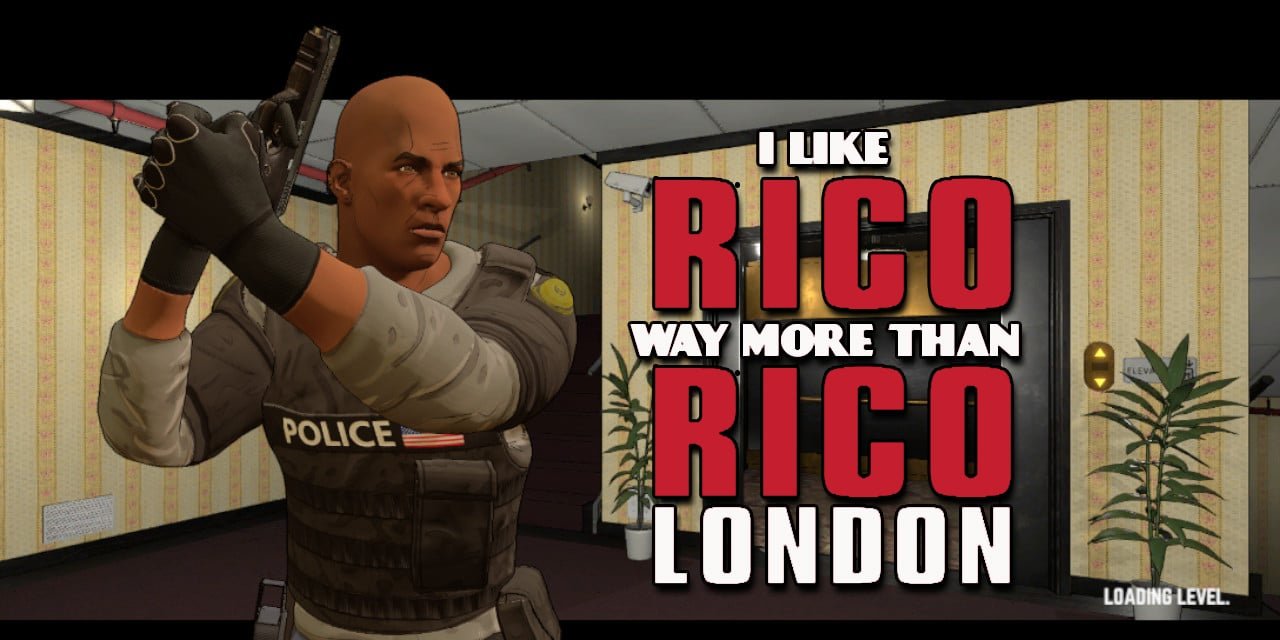Quick View
Games: RICO and RICO: London
Release Date: March 14, 2019 and December 9, 2021
Price: $19.99 for RICO and $49.99 for RICO: London
Rating: Mature
Platform: Switch, PlayStation, Xbox, PC
Geek to Geek Media was provided with a review copy of RICO: London.
RICO: London hooked me the moment I saw its fast-paced, comic-booky, cel-shaded action. I'd never played the original RICO, but decided to pick it up over the summer and had a blast with it. I didn't play too much of it, because I thought the sequel was hitting in September. Last week, RICO: London finally landed on the Switch and… didn't quite click with me as well as the original game did.
What's RICO
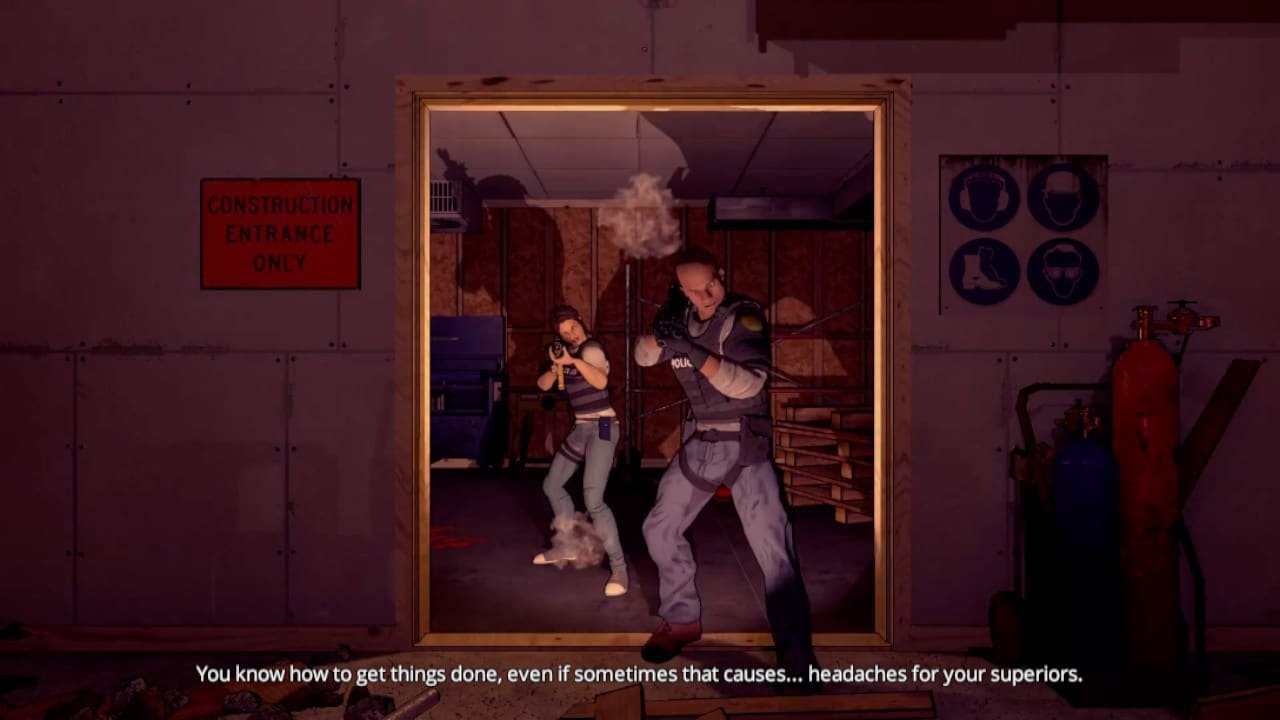
One simple idea serves as the basis for both RICO games: it's heckin' fun to kick a door in and shoot up a room full of folks in slow motion. There's a roguelike structure to both games. You shoot a bunch of guys, buy upgrades, and repeat.
In the first game, you are working your way through an organized crime ring in a generic, fictional American city. The second has you stopping a terrorist weapons deal in London.
As always, I'm kind of put off by playing as a “shoot first ask questions later” cop, but neither of these games really feel like they are trying to say anything political at all. The story in them is negligible and basically tries to set up a dumb 80's cop action movie more than anything else.
RICO the First

RICO‘s campaign structure is very familiar for folks who have played other rogue-ish games. Each run starts you in a training facility (which you can mercifully skip after you've played it once), and then you get to choose from a big set of branching paths where to go next. You can see ahead what sorts of challenges you face and are mostly strategizing risk vs reward on how difficult of a path you want to take.
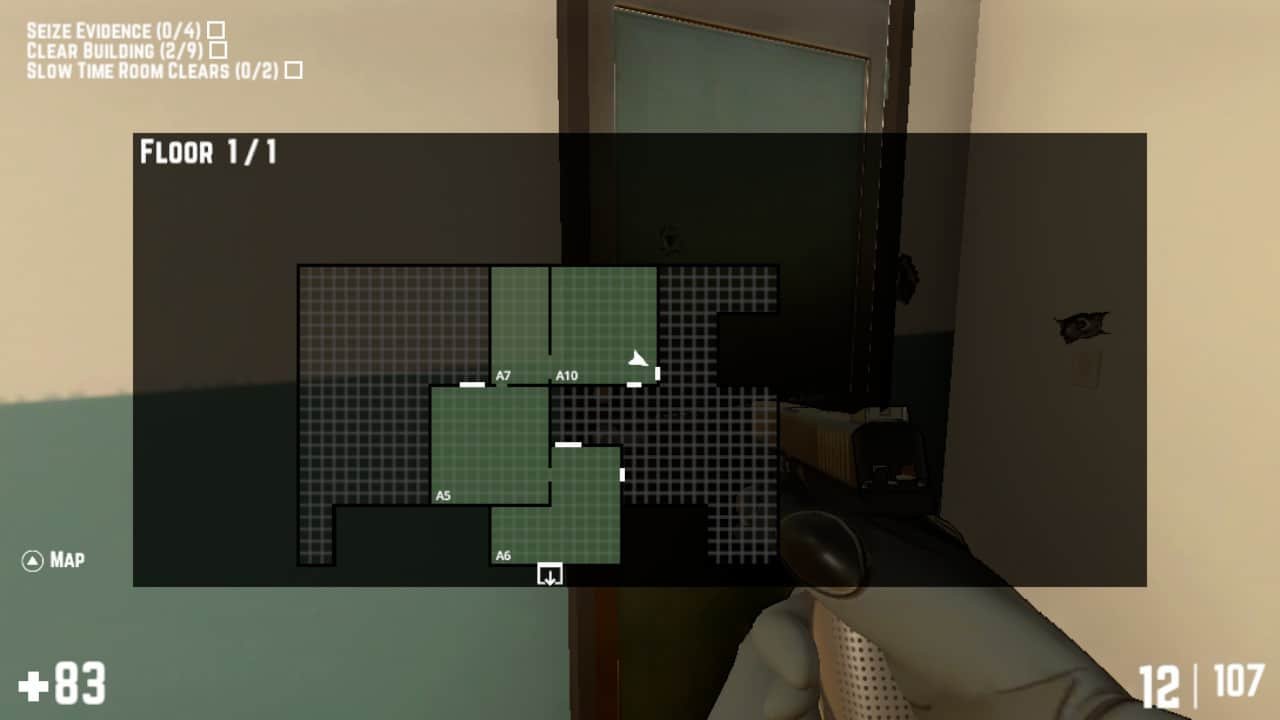
Each level drops you into an environment made up of several rooms. The environments range from swanky estates to apartments and warehouses. Regardless of the location, you'll have a few tasks to try to accomplish to earn the biggest rewards. Clearing the space by busting into every room in the building and taking out everyone you find there is always one goal, while the others can vary.
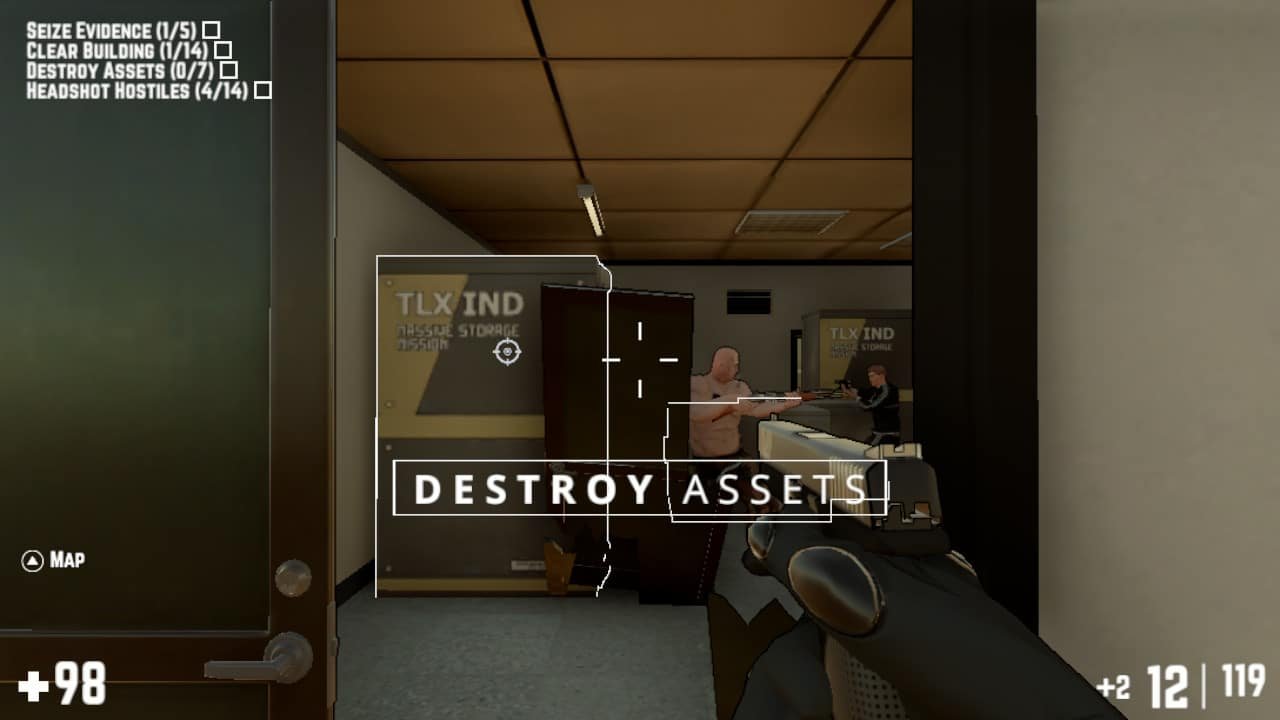
Locating highlighted evidence is a common goal. Sometimes evidence needs to be destroyed (which is very suspicious). Other times you'll need to collect the evidence. There are also challenges to take out a number of enemies in very specific ways. I particularly enjoy being tasked with “slide kills”. There's nothing quite like diving through every room like its a slip-n-slide as I trip up goons and shoot them as I go.
Eventually, reinforcements are called in and you fight your way to the exit. You can technically leave anytime, but the more tasks you complete before you get out, the more Merits you earn to spend on upgrades between levels.
RICO: London
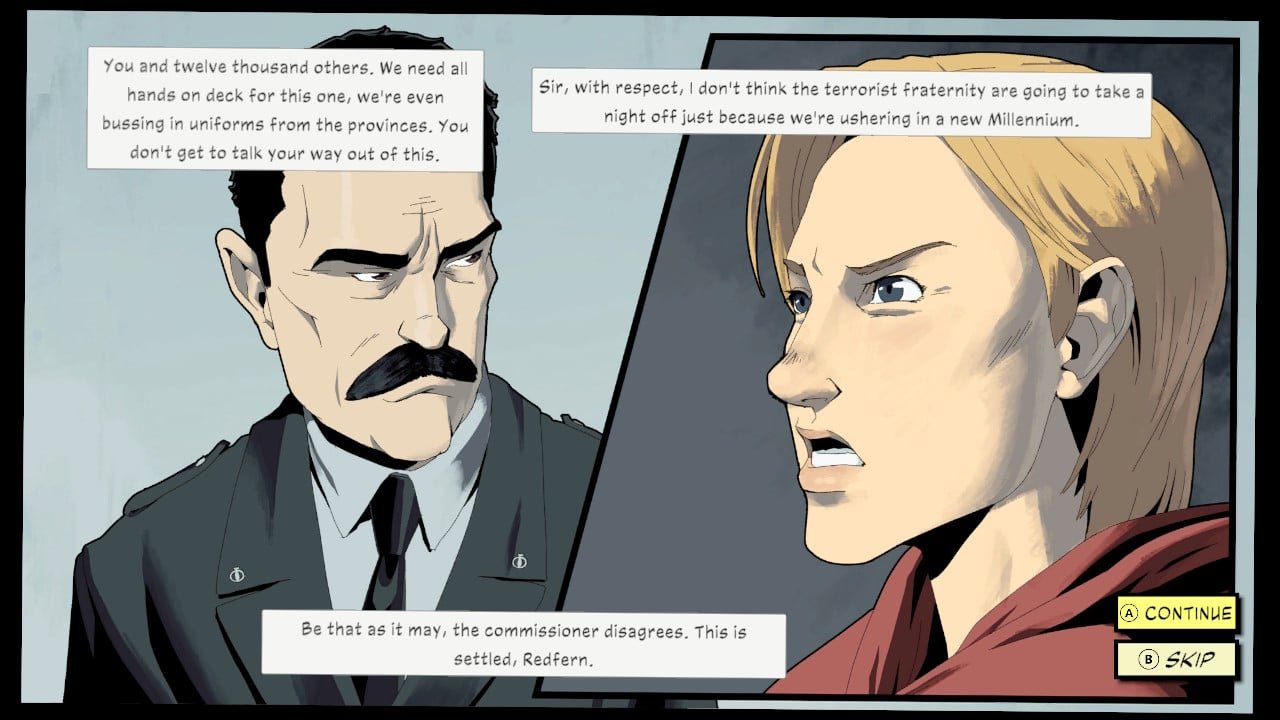
The basic gameplay of RICO: London is the same, in that you spend your time bursting through doors and shooting folks as quickly as you can. The new game also looks great! The visual style feels connected between the two, but London looks just a little more refined and feels even more comic-book-inspired. However, there’s a ton of changes to the more zoomed-out gameplay that make it not nearly as engaging for me.
A Long List of Questionable Changes
- You can no longer slide through a door to open it. Instead, kicking open a door is the only way to breach it. Kicking the doors is fun and all, but it's weird to impose that limitation.
- Enemy health has been boosted. What's the point of a game that throws you into slow motion when a clean headshot isn't always lethal?
- Ammo is more scarce, and you can swap weapons with ones dropped by baddies. This does make for more variety, but it also slows things down as you scrounge for guns.

- Ammo and health pickups have lost their highlightin. The original game put a thick outline around collectibles that was even visible through walls, but in London there's no indication that something is interactive until you are standing right on top of it.
- The branching path is gone, replaced by a run up a single sky rise. Each level gets a different theme, starting with a parking garage and then moving up into offices and luxury suites, but it’s less varied than the original game.
- You no longer have tasks to complete on each level. Instead of trying to find evidence or get kills in specific ways, you just have to find your way through a labyrinth of goon-filled rooms until you get to a staircase leading to the next stage.
- Along with no objectives, there’s also no map. The first game let you see roughly what the layout of a room might be before you went through it, which made picking between two doors slightly less than just a random choice.
Final Thoughts

The whole structure of RICO: London seems built for speed-runners and high-scorers, with points going up in the corner of the screen every time you put a baddie down. I can see the appeal of that sort of gameplay as an optional mode, but I felt much less of a sense of progression or a drive to keep trying than I did in the original game. I don’t think that either of these are bad games, but I’m way more a fan of RICO than I am of RICO: London. The gameplay is pretty close to the same in both, but I like every little detail in the original game more than I like how they were changed in the sequel.
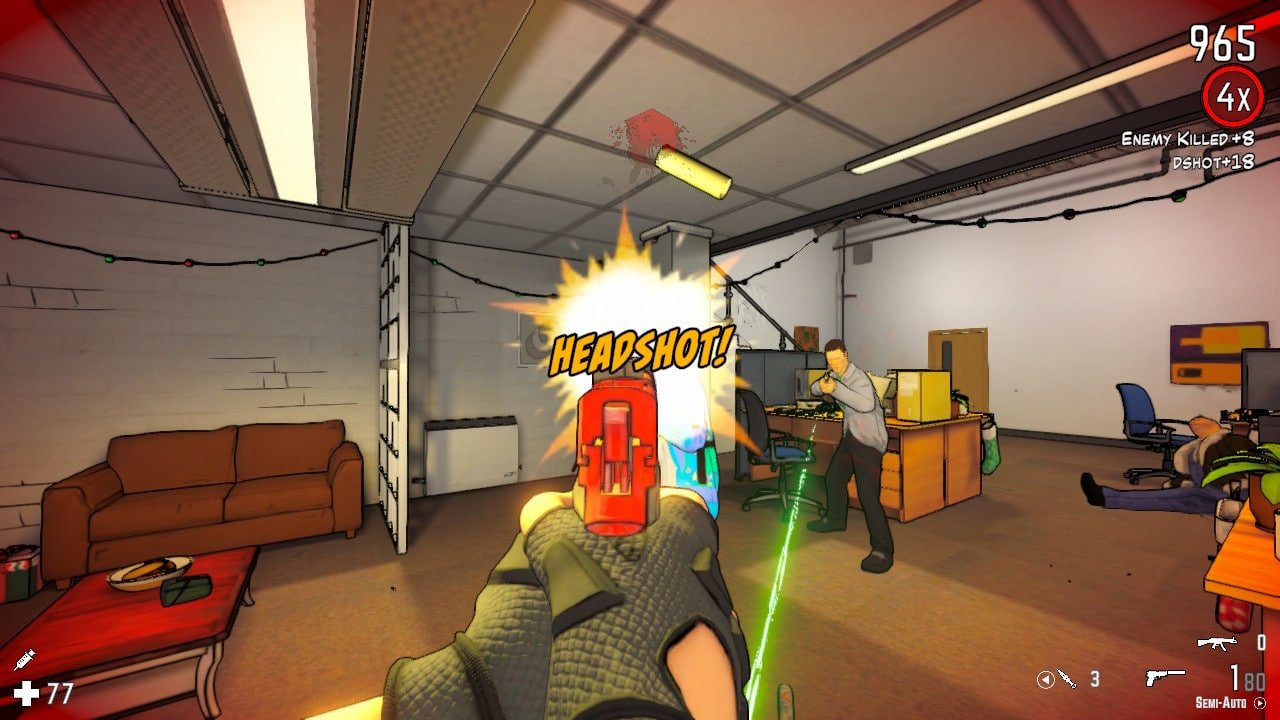
Oh, except for headshots. In RICO: London a comic book font “HEADSHOT” pops up every time you pop a guy in the head, and that’s a feature that should be in every video game with a gun.

